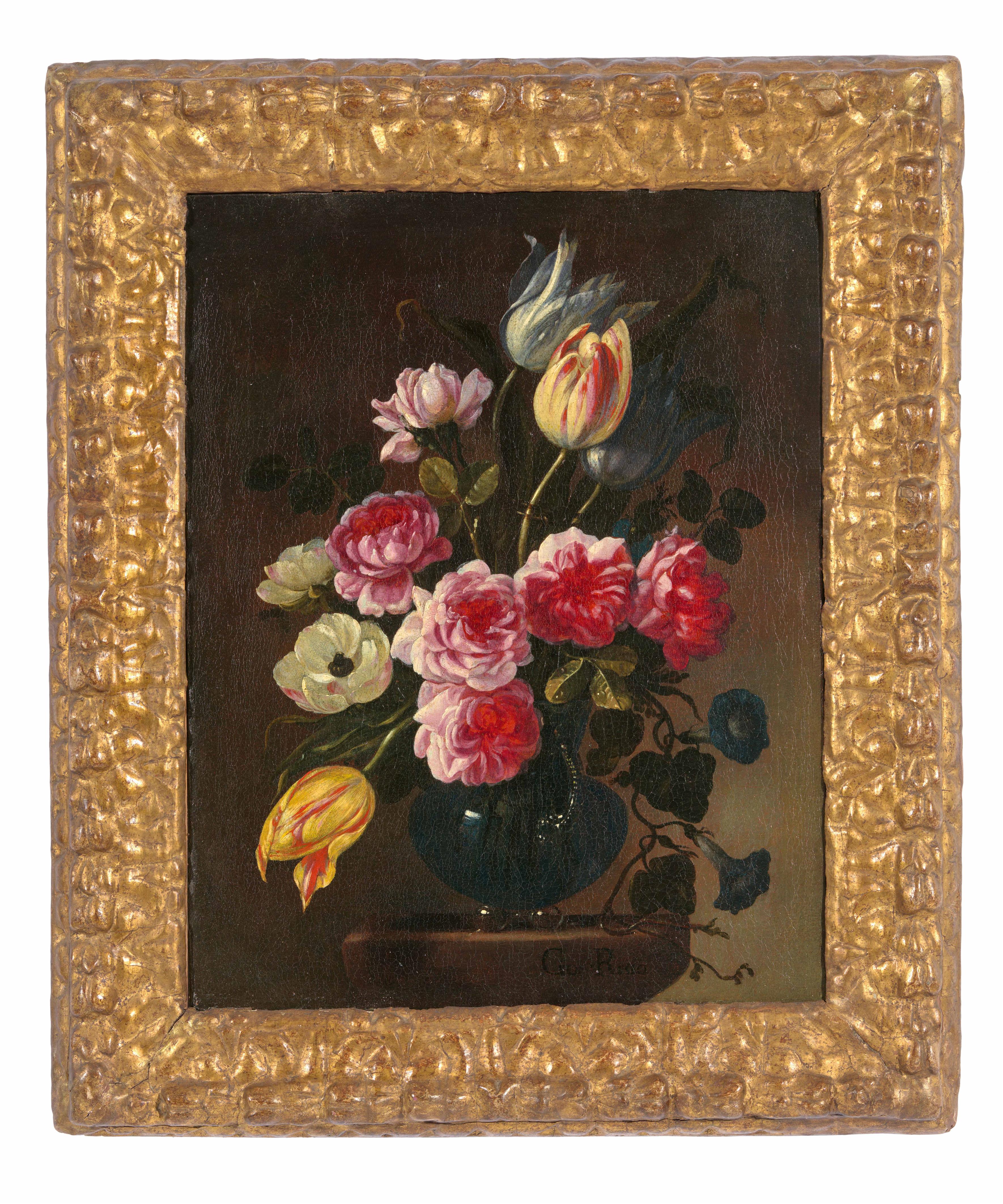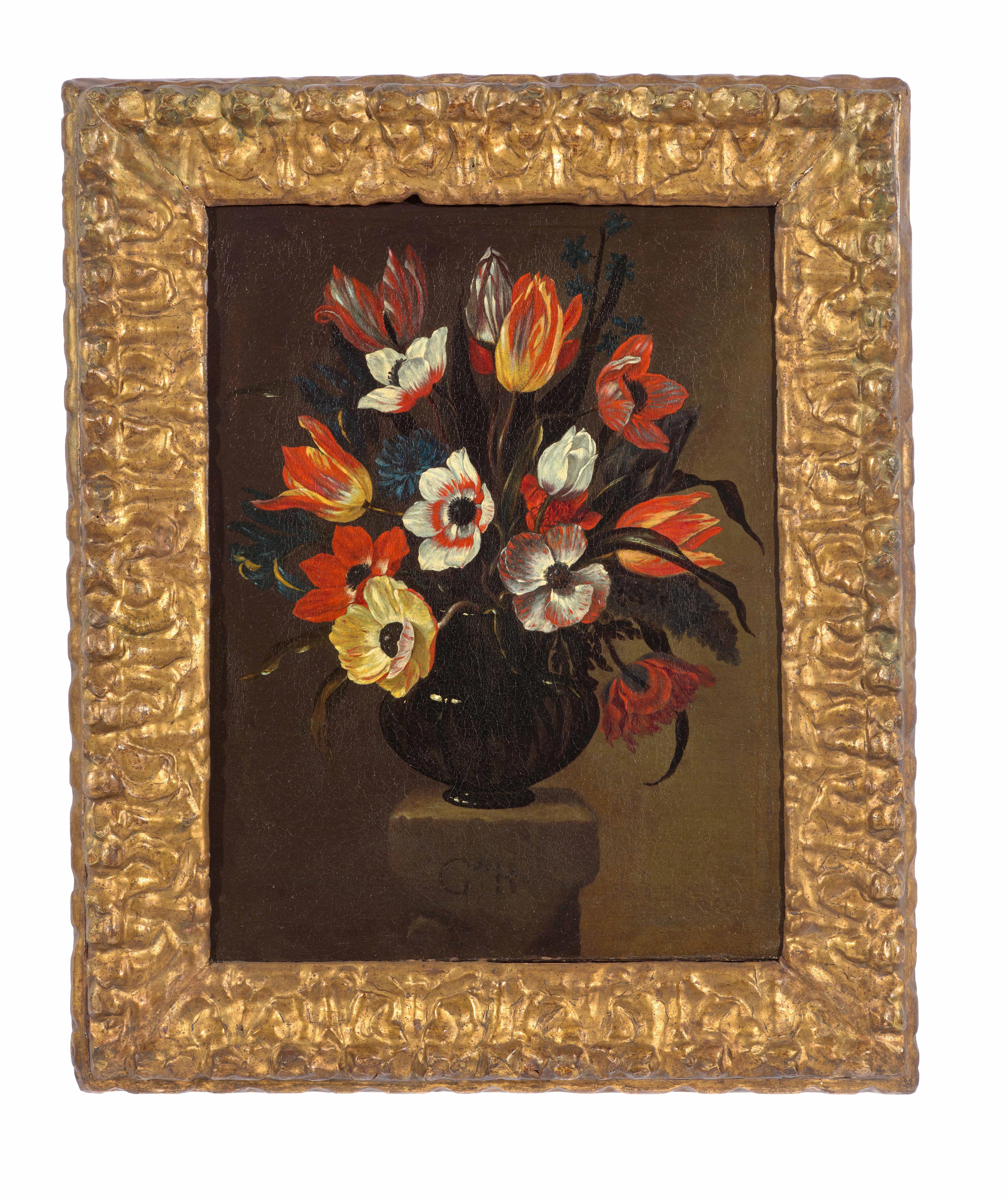Giuseppe Recco
Vase of Flowers with Anemones and Tulips
Vase of Flowers with Roses and Tulips
Oil on canvas. Each 61 x 47.5 cm.
Monogrammed lower centre: G. R. resp. Go. Recco.
Still life painting in 17th century Naples had a very particular style and was a visible expression of the culture of southern Italy, which, due to contemporary political circumstances, combined Italian and Spanish traditions. Alongside the venerable and more renowned genre of narrative painting, a preference for still life painting developed among artists born shortly after 1600. Some of the main driving forces behind this trend were Luca Forte, Paolo Porpora, the Flanders-born Abraham Brueghel, and the brothers Giovanni Battista and Giuseppe Recco. Their favourite motifs were fish and seafood, fruits and vegetables, and to a lesser extent, flowers. These paintings came into the possession of noble families and served as coveted collectibles and furnishings for their urban palaces and rural villas. Neapolitan still life painting is characterized primarily by striking chiaroscuro effects and thus often has an almost nocturnal character.
The two paintings presented here – conspicuously signed and monogrammed respectively by Giuseppe Recco in the lower centre - come from the property of the Lazzari D'Aloisio family (as shown by a label and varnish seal on the reverse). The works share the same dimensions and are both housed in the original identical carved giltwood frames. Nevertheless, it is uncertain whether they were actually created as counterparts. The differing placement of the vases would speak against this assumption. Striking again for both pictures is the simple, almost Spanish archaism of the compositions, which may have been requested specifically by the patron according to their personal taste.
Provenance
The Lazzari D´Aloisio family, Messina (labelled on the reverse). - Galerie Canesso, Paris. - Continental private collection.
Literature
Alberto Middione in: Mina Gregori (ed.): La natura morta italiana tra Cinquecento e Settecento, Ausstellungskatalog, Munich, Kunsthalle der HypoKulturstiftung, and Florenz, Palazzo Strozzi 2003, p. 210-211. - C. Salvi in: V. Damian: L´Oeil gourmand, Ausstellungskatalog Galerie Canesso Paris, 2007, p. 98/99, no. 27. - Denise Maria Pagano in: Ritorno al barocco da Caravaggio a Vanvitelli, Nicola Spinosa (a cura di), catalogo della mostra, Napoli, Villa Pignatelli, 12 dicembre 2009 - 11 aprile 2010, Napoli, 2009, p. 398. - Maria Silvia Proni in: De Chirico, De Pisis, Carrà. La vita nascosta delle cose, Antonio D’Amico (a cura di), Pavia, Castello Visconteo, Musei Civici, 2019, p. 50-51, no. 14, 15.




